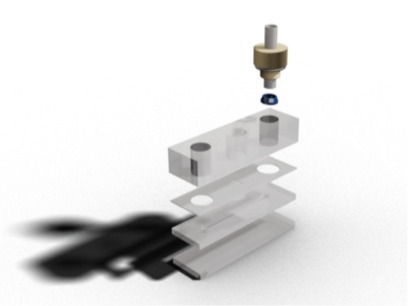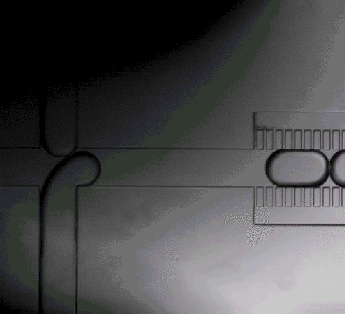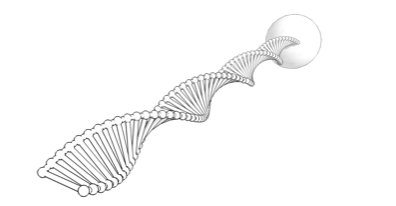
Development of artificial lipid bilayer platforms
A major focus of our group is the development and application of artificial lipid bilayer platforms. These are useful as cell membrane models, allowing scientific study of cell membrane properties and measurement of pore proteins and ion channels. Many applications utilizing artificial lipid bilayers (described below) would benefit from improvements in the underlying lipid bilayer technology, including fast solution exchange, integration with microfluidics, increased lifetime, tolerance to mechanical perturbation, automated production and measurement, and parallelization. These improvements can be made through construction of new devices, changing the chemical composition of the membrane and surrounding solution, or integration with laboratory instrumentation. Read more
Applications of artificial lipid bilayer technologies: Sensing, pharmaceutical screening, and nanoparticle permeation
Protein nanopores contained within lipid bilayers can act as sensors, reporting the presence of other molecules within them through measurements of changing picoampere-level currents. Analysis of these currents can be used to identify various analytes in solution and potentially for sequencing DNA. Reconstitution of physiologically relevant ion channels in lipid bilayers is useful for measurement of drug-induced modulation of ion channel conductance, allowing quantitative determination of ion channel-drug potency. Lipid bilayers also allow measurement of their interactions with nanoparticles, an important health issue. In contrast with cell-based measurements, we are able to easily control the composition of the membrane and surrounding solution to aid in determining the interaction mechanism. All of these applications benefit from improved lipid bilayer technology described above. Read more

Nanopore technologies fo nucleic acid detection
Nanopore sensors can detect molecules contained within them electrically, through measurements of changes in the nanopore’s resistance. The duration and magnitude of this resistance change can be used to help identify the molecule specifically. This principle can be used to easily detect much larger objects such as microscale beads. By tethering DNA molecules to these beads, we effectively amplify the size of the DNA molecule which is much more easily detected, greatly simplifying the device, decreasing its cost, and improving its ease of use. Read more
